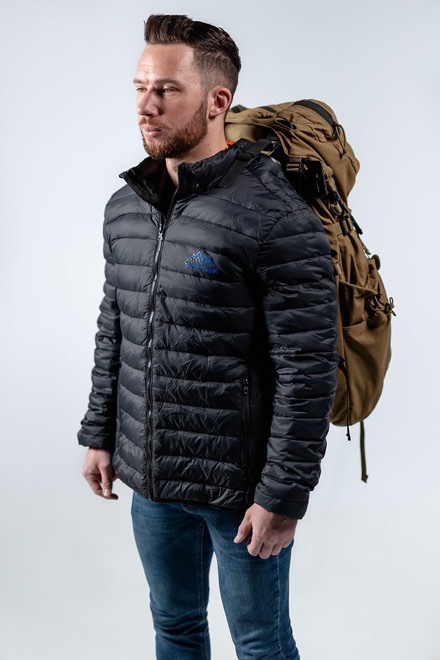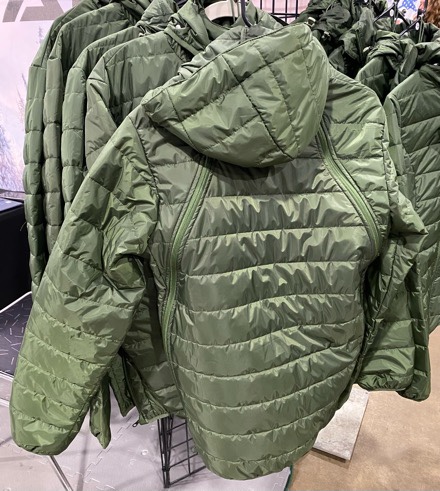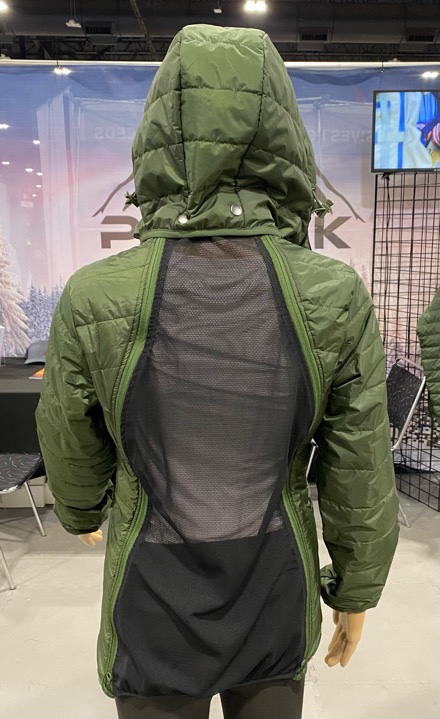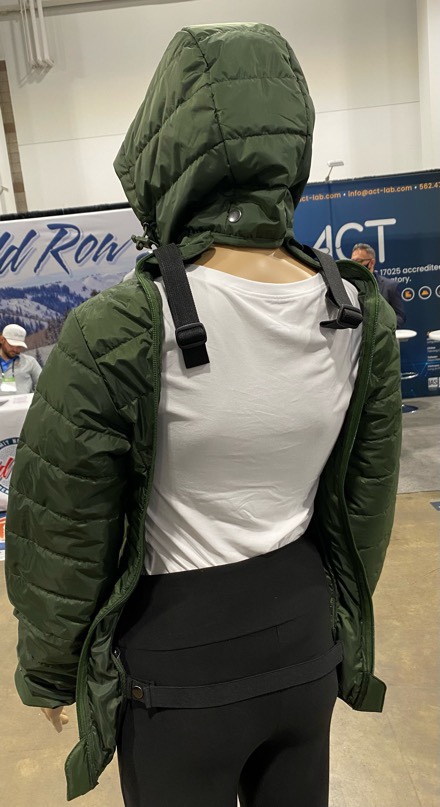Pak-Jak was designed so that you could better regulate your temperature while wearing a pack by incorporating a zip-in removable panel at the back.

The jacket is insulated with Primaloft Gold. At the front it looks like a mild mannered puffy jacket, but the rear panel of the jacket can be configured with insulation, mesh, or left completely open and held together with straps.





I’m thinking this is crazy. Has anyone got any experience using something like this? I know I’m old fashioned. However, if it was cold enough to actually require a puffy jacket while carrying a pack in the first place, it just seems like the cold draft around the pack in the rear would literally freeze your backside off. Am I wrong?
TLB
Same idea applied to other equipment. I liked it. https://www.cryeprecision.com/ProductDetail/aprhj102lg0_halfjak-insulated
A lot of it will depend on the type of pack you use. Internal frames with a lot of padding or that have no/very few vent channels can get pretty muggy. Other issues are the compression of the insulation by the pack and having to readjust your pack for layering up/down. Like Ray said Halfjak while moving but the added benefits of a full jacket in camp and full front coverage.
James, Ray,
I’m still not feeling it. The “traditional” way of doing this business of temperature regulation is to put items on – like puffies or halfjacs – when you STOP moving. And take those kinds of high insulation value items off when doing activities that work up a sweat as with rucking. In fact, the write up on the Crye link provided for the halfjac says just that. Put it on when stationary and take it off when moving.
The upper torso or core produces the heat, and that heat has to be vented somewhere. It seems to me that this arrangement would actually impede the venting of that heat over much of the upper body – and still trap perspiration – in a way that would end up making your front sweaty and your back frigid. Not good. I don’t have one of these to test my premise out, but logic and experience tell me that is what would happen.
TLB
It’d have to be like -20c or below for you to wear this while doing high output aerobic activities like rucking …
Maybe even colder
Ridiculous
Well, it seems like a “solution” in search of a problem. With a very rare exception (like with Deuter Race Air), it doesn’t matter how much clothing you have within the area of contact between your back and the backpack. Because it’s just another layer on top of a very thick stack of layers of the backpack and its content. So, for your personal thermal regulation, common armpit zippers, side zippers, or old-fashioned front closure are more important and convenient than something underneath the pack. The only imaginable problem it could possibly solve is reducing the damage done by wearing a pack to the filling of the jacket. But I’d prefer something like solid fabric rather than mesh.
… and; thats why, okes in flip-flops. win, the long war ………..
Ouch
As heavy sweater, I don’t think it’s that bad an idea. I’d probably have included a simple strap connecting each side at the waist like chest rig. That would keep the sides in place but not interfere with what I think is the best part of this. The back straps can go UNDER the insulation of the jacket. You should be so much drier as a result. Traditional venting as well as controlling how secured the sides are should allow for a lot more control of heat buildup. I’d so much rather arrive at my stopping point and zip in the back insulation leaving me with a dry loft layer than to have to dry out my primary insulation layer with body heat while I set up camp. This is the Crye Half jacket applied to backpacking.
“…that’s a negative ghost rider…”
In ultralight backpacking, we just put on our jacket backwards. Problem solved.
There are conditions – like extreme cold, cold and windy, or cold and damp – where having “some” insulation across your belly and/or lower chest would be nice while rucking… But it would need to be easily vented or removed because as Col. Baldwin pointed out once you start doing strenuous exercise like skiing, snowshoeing, or rucking you’re going to build up heat quickly and if you don’t off load that heat you will sweat – which puts you at a much higher risk of hypothermia when you stop.
An ‘old-fashioned’ woolen belly / kidney warmer with thinner / wicking material at the back would be better than this contraption. The Crye Half-Jac sounds good too – but I don’t have any experience with that. A good old fashioned M-65 jacket liner slipped on backwards is also pretty good as an insulating cover-up for short halts while patrolling – we did that when I went through NWTC in the ’80’s and it worked too.
this seems silly. if your pack is this hot on your back there is something wrong with your pack.
Swordcarry on the back and drawing without freezing! Problem solved…
I LOVE this concept. As a dude that sweats like crazy while backpacking/ carrying heavy equipment and also has to often change undergarments in cold weather due to sweat, this would eliminate so much of my discomfort. An open back means that there is an escape for the evaporation process while I’m hiking, reducing the amount of sweat that my clothing captures. This would be perfect for my snowshoeing adventures and allow me to push my limits vs limit my speed and manage my sweat during below freezing temps
Another point. All of my Jackets have a full front and thin back. But this open concept allows for me to have a dry back when I stop for the day vs having a wet back that either gets other garments wet or a wet/frozen Jacket that I have to put on in the morning.
Bobby,
Obviously, you can buy and wear whatever works for you. But I will offer this advice. It sure doesn’t sound like you are using layering effectively. The concept is that you take layers off at the right time – BEFORE you trap excessive heat and sweat inside. That means in a dry cold situation you might very well be down to you silk weight – next to skin – first layer when you are exerting yourself. A good modern first layer will wick the moisture away from the skin and help you feel dryer as well.
Worse case, you only have to trade out that inner garment with a dry one when you stop. If you come to the end of your movement and you have soaked through any of your additional layers you decided to leave on as you built up heat and perspiration, then you have done it wrong. Wet cold is a little harder to manage but the principle of layering still works to effectively regulate temperature and minimize any moisture build up. Good luck on your next adventure.
TLB